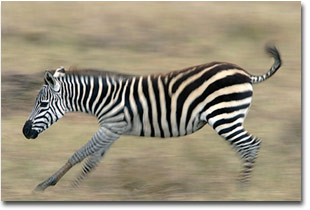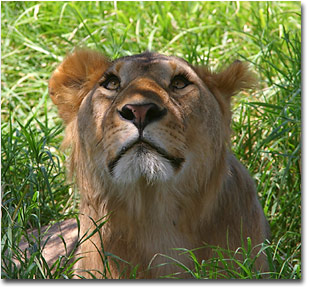The Africa Safari Primer
Text and photography Copyright Andy Biggs. All rights reserved.
Safari (se'fa:ri) n., pl.-ris. An overland expedition for hunting or observing animals especially, in Africa. [Swahili - journey].
Collins Dictionary.
Have you dreamed of taking the ultimate photography trip, by going on an African safari, to visit the countless and varied wildlife, combined with vivid landscapes? If asked, most photographers would tell you that an African wildlife photo safari
 would be their dream destination for their photographic interests. African safaris allow you to experience the wildlife up close and in their own element. I was very surprised when I first went to the Serengeti and saw just how many varieties of wildlife there are to photograph. The quantity and quality of subjects to photograph while on safari make for the richest photography on the planet. Now is the time to visit Africa.
would be their dream destination for their photographic interests. African safaris allow you to experience the wildlife up close and in their own element. I was very surprised when I first went to the Serengeti and saw just how many varieties of wildlife there are to photograph. The quantity and quality of subjects to photograph while on safari make for the richest photography on the planet. Now is the time to visit Africa.
But what if you want to go, but know absolutely nothing about what safari options are available? Well, here is a primer that will hopefully answer those first questions.
Types of Safaris
Most outfitters provide itineraries that are not only different in the location and level of accommodations, but also in the activities provided. For example, photographic workshops, which I personally lead up to 6 per year, are targeted to customers who want to increase their photographic knowledge, as well as be surrounded by other travelers with similar desires. Family safaris typically incorporate cultural activities, such as visiting local villages. There are also safaris for the more adventurous, which involves day hikes, as well as strenuous activities (climbing Mount Kilimanjaro).
Countries
There are many countries in Africa that have wildlife safaris, but not all of them are listed below. Tanzania, my personal favorite, and where I lead photographic workshops, is known as the ‘home of the safari’, and is the location of the famed Serengeti. Next door to Tanzania is Kenya, with the Masai Mara (which is the same stretch of land as the Serengeti, except it is on the Kenyan side of the border). Other countries to consider are South Africa, Botswana, Zambia, Uganda, Zimbabwe and many others. You might want to choose a destination solely upon the wildlife. For example, if you are looking to photograph chimpanzees, Mahale Mountains National Park in western Tanzania would be a great place to view this type of wildlife.
Vehicles
Almost 100% of all safaris are done in a four-wheel drive or high clearance vehicle. Land Rovers and Land Cruisers are definitely the de facto standard. Some vehicles have been stretched to accommodate large groups of people, but most can accommodate up to eight people. With photography in mind, the less people you have in your vehicle, the better. Your safari experience may be inversely proportional to the number of people in the same vehicle! I limit my safaris to a maximum of 3 photographers per vehicle, with an optional non-photographing spouse up front. As a general rule, you get what you pay for. Depending on where you are traveling, your vehicle could either be a ‘pop-top’ or completely open at the top. As a general rule, 'pop-top' vehicles are in the eastern countries, and the open vehicles are in the southern countries. Beware of minivan-type vehicles, as they are more likely to contain larger groups of people.
What to Wear
I had somebody ask me, with a serious face, whether I am taking a pith helmet on my next trip. Uh, no. Throw what you have seen in the movies out the window and start over. Yes, it is a good recommendation to wear earth tones, primarily because the dirt does not show as much as a white shirt would. The countries that are closer to the equator (Kenya, Tanzania, Uganda, Rwanda, etc) have less pronounced seasons, but the temperature is dictated more by the elevation
 than anything else. The more southern countries (South Africa, Namibia, Zimbabwe) have more defined seasons. Do your research before departing, to see what to wear.
than anything else. The more southern countries (South Africa, Namibia, Zimbabwe) have more defined seasons. Do your research before departing, to see what to wear.
Accommodations
There are many different accommodations while on safari, from do-it-yourself campgrounds to 5-star quality lodges rivaling the best hotels in the world. I categorize the types of accommodations into three categories: adventure tents, permanent tents and lodges. ‘Adventure tented safaris’ are just like camping out, as guests set up and break down their own tents. This is the least expensive option. The next category is the ‘permanent tented safari’. Permanent tents have all of the amenities of a lodge, with canvas overhead and walls to the sides. These camps are set on permanent foundations, and each tent typically contains a private bathroom with flush toilet and a hot shower. Lodges are the most similar to hotels; with modern sleeping accommodations and attached private bathrooms. Typically lodges have more guests, so what you gain in conveniences, you might lose in personal attention. This is not always the case, though.
Make note of your photographic needs, as no adventure tented safaris, and only a few permanent tents, offer the ability to recharge your electronic equipment each night. Some accommodations only have a generator running a certain times
 during the day. Make sure you know the capabilities of each camp before you book your trip. However, you will be in a safari vehicle during the day, in which you can use the cigarette lighter to recharge your devices.
during the day. Make sure you know the capabilities of each camp before you book your trip. However, you will be in a safari vehicle during the day, in which you can use the cigarette lighter to recharge your devices.
Miscellaneous
Don’t forget to be current on your immunizations, visas and travel insurance. Insurance for lost or stolen photo equipment is strongly advised. Major airlines do not cover much, if anything. I have found that all-risk camera insurance on a homeowner’s policy is the best way to be insured. Medical needs are often overlooked, and take weeks of preparation to locate and satisfy the requirements of your country’s destination. Also plan on taking anti-malarial medicine.
Photographic Equipment
The photographic equipment required is dependent on where you are planning to go on a safari. For example, the open savannahs of the Masai Mara and the Serengeti will require much longer lenses than those of the woodland areas of South Africa, and of the forested lands in Rwanda and Uganda. A 300mm or 400mm is my suggestion for the shortest focal length on a savannah/woodland safari. Definitely take the longest focal length that you can afford, both financially and in size and weight. I have found that with modern digital SLR cameras, a 400mm lens makes for a wonderful focal length. Forested areas might require a little less focal length, but faster (f/2.8) lenses are necessary, due to the low light underneath the canopy. However, many travelers get consumed with intensely close head shots of the wildlife, but neglect planning for the wide landscapes and people of the region. So don't forget to take both wide angle and medium focal lengths, as well. Also keep in mind that, depending on the national park you are in, you might not be able to get out of your vehicle while away from your evening accommodations, except for brief bio breaks and designated picnic areas. This often hinders the use of any tripod equipment while out in the bush. On one's first safari, I recommend leaving tripods back at home, due to bulk, weight and low usage issues.
Summary
There are many different options for safaris, and choosing the right options for you is the first step towards an enjoyable experience. The time to visit Africa is now!
About the images...
Running Zebra, Ngorongoro Crater, Tanzania - Canon 10D, 300mm f/4 L IS, handheld, 1/60 sec, f/10, ISO 200.
Running Zebras, Serengeti National Park, Tanzania - Canon 10D, 300mm f/4 L IS, handheld, 1/50 sec, f/11, ISO 100.
Lion, Serengeti National Park, Tanzania - Canon 10D, 300mm f/4 L IS, 1.4xII TC, beanbag support, 1/125 sec, f/10, ISO 200.
Editor's Note - Andy takes up to six trips per year to Tanzania, the 'home of the safari', to teach workshops and to share his enjoyment of the wildlife, landscapes and people of Tanzania. If you are interested in joining him on one of his trips, you can contact him at andy@andybiggs.com, view his workshop schedule on his web site, or visit his main website at www.andybiggs.com.
Andy Biggs - NPN 885
Comments on NPN African wildlife photography articles? Send them to the editor.


| 


